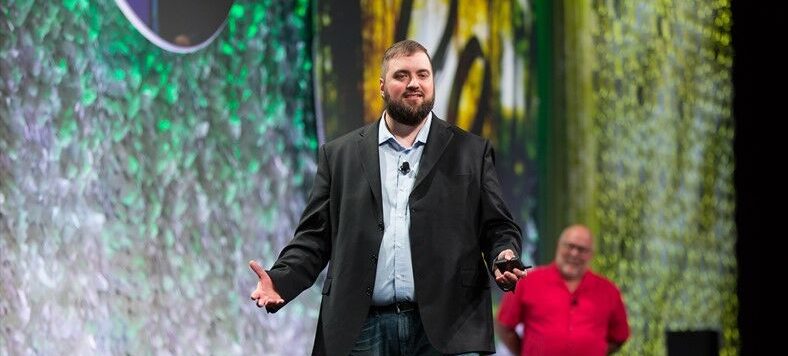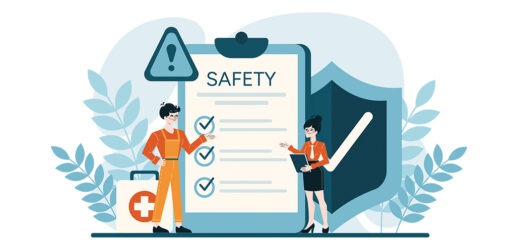Title: President, Borelli Strategies, Cleveland
Fun Fact: Started washing dishes at a retreat center in Erie, Pennsylvania, at age 14 while pursuing a side-hustle creating websites. Now travels all over the world consulting and talking about strategies for live events.
What is the most important thing event professionals need to know about using social media today?
Once you get past the 101 and have the frequency and consistency down, you can move into creating personas based on the pain points of different types of consumers. Your job is to figure out what makes them tick. Then you can grow events by reaching people you haven’t reached before and retain those who have attended by meeting the needs of these micro-communities.
What is your top tip for using each platform?
 Instagram is the easiest platform to gain attention organically—meaning you don’t have to pay for it. By posting smart content, you can gain trust and eventually convert. It is not a place for designed graphics; it is ideal for deeper storytelling, branding opportunities and a look behind the scenes. The demographics skew young, but it is gaining in the 35- to 45-year-old group.
Instagram is the easiest platform to gain attention organically—meaning you don’t have to pay for it. By posting smart content, you can gain trust and eventually convert. It is not a place for designed graphics; it is ideal for deeper storytelling, branding opportunities and a look behind the scenes. The demographics skew young, but it is gaining in the 35- to 45-year-old group.
Snapchat had a year of potential in 2016, but Facebook (which owns Instagram) squashed it by taking the user experience that made it unique and bolting it onto Instagram. Some 400 million active users flock to Instagram stories each day now. Plus, it has superior discoverability. But be warned: This is not the place to sell. It is all about the long game. Stay the course and plan a content calendar that is consistent and valuable.
Facebook put the nail in that platform’s coffin recently by changing the algorithm to make it 100 percent pay-to-play. You have to budget, test and measure. The only organic growth is through Facebook Live, which is potentially the sole future of social media.
Twitter has become the brand identified with controversy. In a world where people are producing content ad nauseum, what rises above is stuff that shocks. It is still the best platform for seeing the pulse of the community.
More: How to Get the Most Out of Each Social Media Platform
For best results, add speakers, stakeholders and influencers to lists, and use them as a social listening platform. Post about people associated with your events—their wins are your wins.
What can an influencer do for an event company—and what can’t they do?
Voices with big social media followings can help overcome advertising fatigue. They offer a lot of benefits for reach and awareness.
Be careful, however, that you don’t get into bed with people who look good on paper, but don’t align with your brand—such as Disney’s short relationship with Pewdiepie.
More: Big Influence of Influencers on Meetings Industry
Also, make sure the influencer is not more important than the event itself. A classic example is when Fyre Festival paid Kendall Jenner $250,000 for a single Instagram post, but didn’t pay for 5 percent of the restrooms needed for what turned out to be a refugee camp in the Bahamas. Focus on micro-influencers rather than macro-influencers and be prepared to deliver.
What is the most effective way to create FOMO (fear of missing out) at an event?
Remember, the people at an event are trying to tell their story, not yours. They don’t care who the silver sponsor was, even if it is on a step-and-repeat. You have to unlock what matters to them and make it easy for them to tell their story as it fits with your event. Find something they can rally behind. Design photo opportunities so they want to share without being asked to do it. If you understand the behavior of the humans attending, you can put it in the space and then let them think they came up with the idea of sharing. Then they will post the pictures that will make all their friends wish they were there.
What is the role of humor in an event?
The world is less stuffy than it used to be. One of the central tenants of what makes us human is humor, and what makes a dry brand is the lack of it. Animated gifs and memes that tell your story without taking yourself too seriously deliver something people crave. The day of the memo is over. People want to hear a human voice and have an emotional connection. There is such a battle for attention today that you can’t afford to be boring.
How can an event be authentic about CSR instead of using it to check a box?
It comes down to mission and values. Companies that do a good job of talking about their values can overcome some of the worst PR issues—Starbucks is an example. Coordinating CSR with shared values and storytelling answers the question of why they are doing this. Talk about the human connection and how it fits with the company’s mission. It has to be done with purpose and intentionally designed to be memorable.




